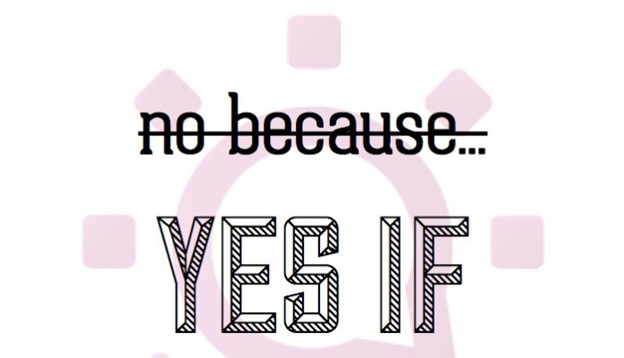In my career, I’ve learned that framing our responses to challenges and opportunities can significantly influence our team’s culture and overall success. One of the most impactful shifts I’ve experienced is adopting a “Yes, if” mindset over a “No, because” approach.
This seemingly small change can foster a culture of possibility, innovation, and problem-solving. I want to share my experiences and insights with you, as I believe this shift can be transformative for your career and organization as well.
Embracing the “Yes, If” Mindset
When we encounter new ideas or projects, it’s natural to immediately see the obstacles and reasons why something might not work. However, starting with “No, because” shuts down creativity and discourages initiative. It creates an environment where employees may hesitate to bring forth innovative ideas, fearing they’ll be dismissed outright.
Instead, I encourage a “Yes, if” approach. This mindset shifts the conversation from what can’t be done to what can be achieved, given certain conditions. It invites collaboration and problem-solving, turning potential roadblocks into challenges to overcome together.
For example, when my team proposed integrating a new telehealth platform during the early days of the pandemic, initial reactions could have focused on the barriers: lack of existing infrastructure, budget constraints, or potential resistance from staff. Instead, by framing the discussion with “Yes, if,” we explored what would be necessary to make it work:
- Yes, ifwe secure the necessary funding.
- Yes, ifwe provide adequate training for our staff.
- Yes, ifwe ensure the platform meets all regulatory requirements.
This approach transformed a potentially dismissive conversation into a constructive planning session. As a result, we successfully implemented the platform, significantly enhancing our healthcare delivery capabilities during a critical time.
Recommended by LinkedIn
The Power of Positive Framing
Positive framing through “Yes, if” does more than just keep the conversation going. It empowers team members to think critically and creatively about solutions. It fosters an inclusive environment where everyone feels their ideas are valued and considered.
Moreover, this mindset encourages personal and professional growth. Team members learn to anticipate challenges and think proactively about solutions, a skill that is invaluable in any field. It builds resilience, as the focus shifts from what’s not possible to how we can make things possible.
Practical Steps to Implement “Yes, If”
Here are some practical steps to integrate the “Yes, if” approach into your daily interactions:
- Encourage Open Dialogue: Create a safe space where team members feel comfortable sharing their ideas without fear of immediate rejection. Emphasize that all suggestions are worth exploring.
- Focus on Solutions: When faced with a proposal, consciously steer the discussion towards what would be needed to make it work rather than why it might fail.
- Foster a Collaborative Culture: Involve various stakeholders in the brainstorming process to leverage diverse perspectives and expertise. This not only enriches the conversation but also builds a sense of ownership and commitment to the outcome.
- Provide Resources and Support: Ensure your team has the necessary resources and support to explore and implement their ideas. This might include training, budget allocations, or time for research and development.
- Celebrate Successes: Recognize and celebrate when a “Yes, if” approach leads to successful outcomes. This reinforces the value of positive framing and encourages continued innovation.
Conclusion
Adopting a “Yes, if” mindset has been a game-changer in my role at Santa Clara County. It has not only driven innovation and improved problem-solving but also created a more positive and empowering work environment. I encourage you to try this approach in your own career. Embrace possibilities, focus on solutions, and watch as your team transforms challenges into opportunities.
Remember, “Yes, if” is welcome here, and “No, because” is not. This simple shift can make all the difference in driving your organization towards greater success.





